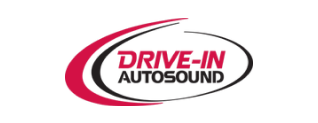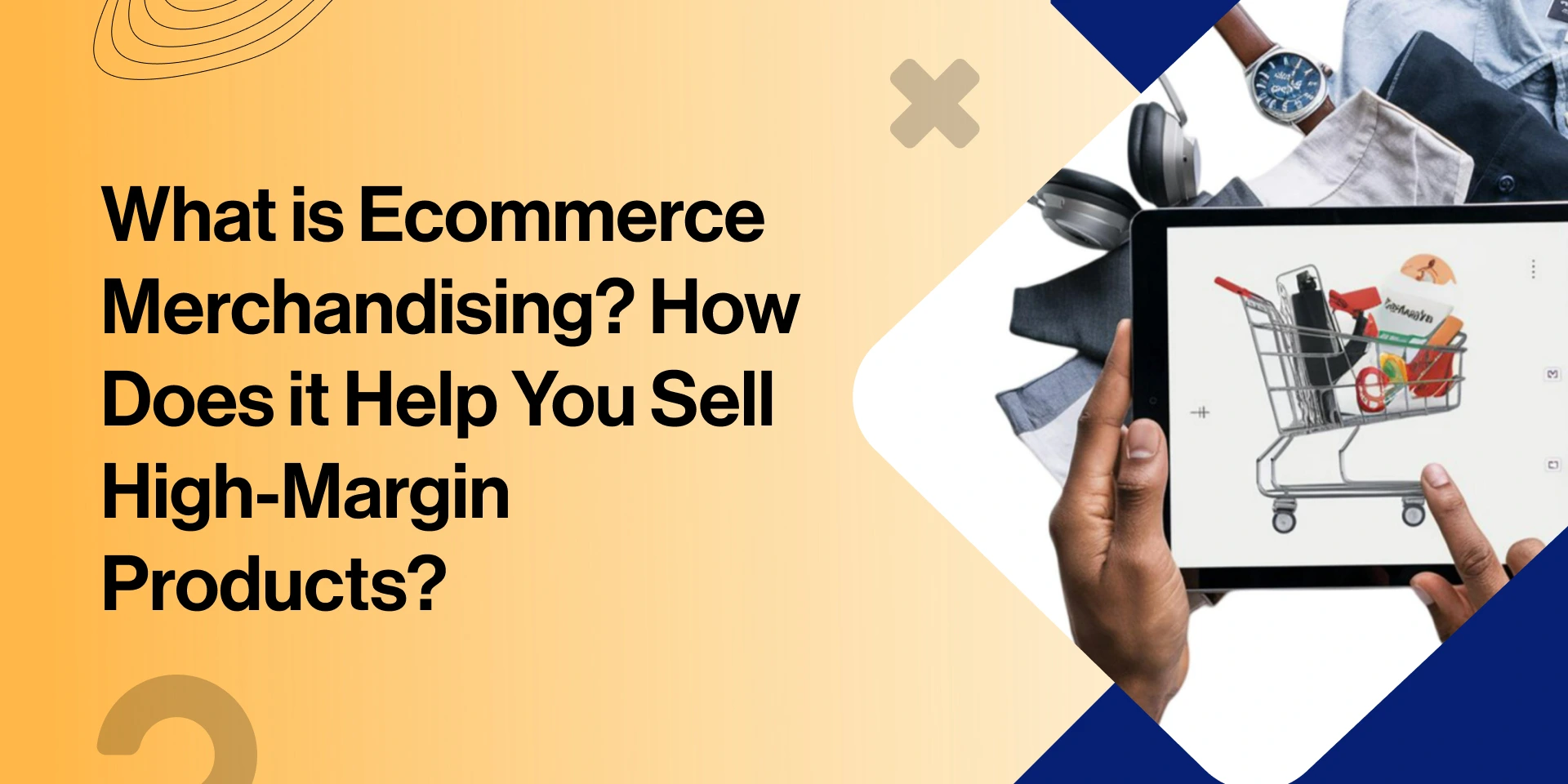Table Of Contents:
How Ecommerce Merchandising Differs from Traditional Merchandising
Introduction
E-commerce merchandising and traditional brick-and-mortar merchandising share the same goal—driving sales—but the strategies and tools they use are worlds apart. While traditional merchandising relies on physical spaces, in-person interactions, and static displays, ecommerce merchandising tools thrive on data, adaptability, and digital-first tactics. Here’s how they differ:
Space vs. Scrolling
- Traditional: Limited by shelf space and store layouts. Products compete for prime aisle-end displays or checkout counter placements.
- E-commerce: Unlimited “shelf space” but constrained by screen real estate. Success hinges on dynamic product grids, search rankings, and homepage banners. Tools like ConversionBox’s Online Merchandising Suite let retailers instantly spotlight high-margin products without rearranging a single physical item.
Real-Time Data vs. Guesswork
- Traditional: Merchandising decisions often rely on historical sales data or seasonal trends, updated weekly or monthly.
- E-commerce: Powered by real-time analytics, like click-through rates, bounce rates, and cart abandonment. Retailers can A/B test product placements, adjust pricing on the fly, and pivot strategies mid-campaign.
Personalization at Scale
- Traditional: Sales associates might recommend products based on a customer’s style, but this is manual and inconsistent.
- E-commerce: AI-driven tools analyze browsing history, demographics, and purchase behavior to serve hyper-personalized suggestions. For example, a returning visitor might see a curated “VIP Collection” of high-margin items tailored to their past preferences.
Flexibility and Speed
- Traditional: Changing a store layout or promotional display takes hours (or days) and physical labor.
- E-commerce: Online Merchandising updates happen in minutes. With a few clicks, you can swap out holiday promotions, highlight trending products, or reorder search results globally.
Customer Interaction
- Traditional: Relies on face-to-face interactions, signage, and in-store demos to engage shoppers.
- E-commerce: Uses interactive elements like chatbots, video tutorials, and shoppable lookbooks to replicate how to sell high-margin products in your online store.
Why This Matters for Selling High-Margin Products
Understanding these differences is key to maximizing profitability online. E-commerce merchandising tools eliminate traditional methods’ guesswork, allowing you to strategically push high-margin products through personalized experiences, real-time optimizations, and scalable campaigns. By leveraging tools like AI-powered search and dynamic online merchandising suites, you can turn every pixel of your site into a revenue-driving asset—no physical shelf required.
Identifying High-Margin Products for Your Store
Not all high-margin products are apparent. Follow these steps to uncover hidden gems:
Calculate Margins Accurately
Use the formula:
Margin (%) = [(Selling Price – Cost of Goods Sold) / Selling Price] × 100
Factor in hidden costs like packaging, storage, or transaction fees.
Analyze Customer Lifetime Value (CLV)
Products that drive repeat purchases (e.g., consumables or subscription boxes) often have higher long-term margins.
Leverage Sales Data
- Identify top-selling items with low return rates.
- Use heatmaps or A/B tests to see which products engage users most.
Spot Trends Early
Tools like Google Trends or social listening platforms (e.g., Brandwatch) reveal rising demand for niche categories.
Audit Your Catalog
- Use a free ecommerce site search audit to discover underperforming products that could be repriced or bundled for better margins.
- High-Margin Product Categories to Consider.
- Private-label items: Control pricing and branding.
- Digital products: Zero inventory costs (e.g., eBooks, courses).
- Seasonal bundles: Combine low-margin items with high-margin add-ons.
Ready to Boost Your Margins?
Once you’ve identified your high-margin stars, the next step is showcasing them effectively. In the next section, we’ll discuss how to improve e-commerce merchandising to ensure these products shine and sell.
Supercharge Your Site Search & Product Discovery
Discover how our AI can transform your product discovery and boost conversions.
Schedule a DemoKey Ecommerce Merchandising Strategies
You need a mix of art and science to turn high-margin products into profit powerhouses. Here’s how to deploy proven tactics that drive conversions and prioritize your most lucrative items.
1. Optimizing Product Pages for Conversion
- Your product page is where shoppers decide to buy—or bounce. Optimize every element:
- High-Quality Visuals: Show details using 360-degree images, videos, and zoom features.
- Compelling Copy: Highlight benefits, not just features. Example: “This blender saves 10 minutes daily with one-touch cleaning.”
- Social Proof: Display reviews, ratings, and user-generated content.
- Urgency Tactics: Add low-stock alerts or countdown timers for discounts.
- Clear CTAs: Use contrasting buttons like “Buy Now” or “Add to Cart—Free Shipping.”
Pro Tip: A/B test elements like pricing layouts or trust badges using tools like ConversionBox’s Online Merchandising Suite.
2. Using Visual Merchandising for Impact
- Visuals guide shoppers’ eyes to high-margin products. Tactics include:
- Hero Banners: Feature trending or seasonal items on your homepage.
- Lifestyle Photography: Show products in use (e.g., a coffee mug in a cozy kitchen).
- Shoppable Lookbooks: Let users click directly on outfits or room setups.
- Video Demos: Highlight product functionality in under 30 seconds.
- Tools like ConversionBox simplify creating dynamic, rule-based displays (e.g., “Show vegan skincare to eco-conscious visitors”).
3. Strategic Cross-Selling and Upselling
- Cross-Selling: Suggest complementary items. Example:
- “Customers who bought this yoga mat also bought blocks.”
- Upselling: Encourage upgrades. Example:
- “Love this laptop? Get 20% more storage for $50 extra.”
4. Leveraging Search and Navigation for Product Discovery
- 50% of shoppers use search bars—and they’re 2–4x more likely to convert. Optimize with:
- Predictive Search: Auto-suggest high-margin products as users type (e.g., “premium yoga mat” vs. “cheap mat”).
- Merchandised Search Results: Manually boost specific items in search rankings.
- Smart Filters: Let users sort by “Highest Margin” or “Staff Picks.”
- Tools like ConversionBox’s Predictive Search prioritize high-value products while analyzing query trends.
5. Personalization Tactics to Promote High-Margin Products
- Tailor experiences using data
- Behavior-Based Suggestions: Show returning visitors items related to past purchases.
- Segmented Campaigns: Target VIP shoppers with exclusive high-margin bundles.
- Dynamic Content: Display location-specific offers (e.g., winter coats to users in cold climates).
- For example, a customer browsing $200 sneakers might see a curated “Premium Styles” carousel instead of a budget option.
Designing a Winning Merchandising Plan
A strategic merchandising plan turns data into profit. Here’s how to analyze customer behavior, launch data-driven campaigns, and refine tactics with A/B testing to spotlight high-margin products.
1. Analyzing Customer Behavior
Understanding how shoppers interact with your site reveals where to focus your merchandising efforts:
Key Metrics to Track:
- Click-through rates (CTR): Which banners or product tiles attract clicks?
- Bounce rates: Are visitors leaving high-margin product pages too quickly?
- Cart abandonment: Identify friction points during checkout.
- Heatmaps: Visualize where users hover, scroll, or click.
Tools to Use:
- Google Analytics for traffic and conversion trends.
- Hotjar for heatmaps and session recordings.
- ConversionBox’s Merchandising Suite to track search query performance.
Example: If heatmaps show users ignoring a high-margin product carousel, test relocating it above the fold.
2. Creating Data-Driven Merchandising Campaigns
Turn insights into action with targeted campaigns:
Segment Your Audience:
- Group customers by behavior (e.g., frequent buyers, cart abandoners) or demographics.
- Example: Target VIP shoppers with a “Luxury Edit” email featuring high-margin items.
Personalize Product Displays:
- Use dynamic content rules to show trending/high-margin products to specific segments.
- Tools like ConversionBox automate this by promoting products based on real-time data.
Leverage Predictive Analytics:
- Anticipate demand using historical data (e.g., upsell winter coats in early fall).
Pro Tip: Bundle low-margin staples with high-margin accessories (e.g., a camera with a premium lens kit).
3. Using A/B Testing to Improve Results
Test, iterate, and optimize relentlessly:
What to Test:
- Product page layouts (e.g., image galleries vs. video demos).
- Placement of high-margin items (e.g., homepage banners vs. category headers).
- CTAs (e.g., “Buy Now” vs. “Add to Cart—Free Shipping”).
Best Practices:
- Test one variable at a time for clarity.
- Run tests until reaching 95% statistical significance.
- Use tools like ConversionBox’s A/B testing features to streamline experiments.
Example: An A/B test revealed that placing a high-margin skincare set at the top of category pages increased its sales by 34%.
Uncover Hidden Gaps in Your Search and Product Filters
Get a free product discovery audit and find opportunities to improve conversions.
Talk to an ExpertBest Practices for Showcasing High-Margin Products
Combine creativity with data-backed tactics to maximize visibility and desirability for your high-margin products. Here’s how to spotlight them effectively across your store.
1. Featured Collections and Spotlight Sections
Curate dedicated spaces to highlight high-margin items:
Examples:
- “Premium Picks”: A collection of high-end products.
- “Best for You”: Personalized recommendations based on browsing history.
- “Staff Favorites”: Humanize your brand by showcasing team-approved items.
Placement Tips:
- Position these sections above the fold on your homepage or category pages.
- Use eye-catching visuals like animated banners or gradient backgrounds.
Tools:
Platforms like ConversionBox’s Merchandising Suite let you create rule-based collections (e.g., “Show luxury watches to users with a $500+ cart history”).
2. Seasonal and Trend-Based Merchandising
Align high-margin products with timing and trends to tap into urgency:
Seasonal Campaigns:
- Bundle products for holidays (e.g., “Summer BBQ Essentials” with premium grilling tools).
- Refresh banners and email headers to match themes (e.g., winter holidays, back-to-school).
Trend-Driven Strategies:
- Use tools like Google Trends or TikTok hashtags to identify viral products.
- Create “Trending Now” sections to capitalize on fleeting demand.
Example:
- During fitness challenge trends, spotlight high-margin activewear or smartwatches. Pro Tip: Use predictive search analytics to anticipate seasonal demand and adjust inventory early.
3. Strategic Pricing and Discounts
Promote high-margin products without sacrificing profitability:
Psychological Pricing:
- Use “charm pricing” (99.99 instead of 100) for perceived affordability.
- Highlight value with “Cost per use” (e.g., “Just $1/day for this premium blender”).
Tiered Discounts:
- Offer “Buy 1, Get 30% Off the Second” to move more units.
- Bundle low- and high-margin items (e.g., a 50 skincare set with a 30 high-margin serum).
Limited-Time Offers (LTOs):
- Create urgency with countdown timers (e.g., “24-Hour Flash Sale: Premium Headphones 20% Off”).
- Avoid This Mistake: Never deeply discount high-margin products. Instead, offer free shipping or gifts with purchase (e.g., “Spend $200, Get a Free Luxury Tote”).
Common Mistakes to Avoid in Ecommerce Merchandising
Even the best merchandising strategies can fail if you overlook critical pitfalls. Here are three costly mistakes and how to dodge them to keep high-margin products in the spotlight.
1. Overloading Product Pages
The Problem:
Bombarding shoppers with too much information, cluttered layouts, or excessive CTAs (“Buy Now,” “Add to Cart,” “Learn More”) causes decision paralysis.
Examples:
- Walls of text without subheadings or bullet points.
- Auto-play videos, pop-ups, and multiple banners competing for attention.
The Fix:
- Simplify Design: Use whitespace, clear hierarchies, and concise copy.
- Prioritize Key Info: Lead with benefits, pricing, and a single prominent CTA.
- Test Layouts: Tools like ConversionBox’s A/B testing help identify clutter-free designs that convert.
2. Ignoring Mobile Experience
The Problem:
Over 60% of ecommerce traffic comes from mobile, yet many sites still prioritize desktop. Tiny buttons, slow load times, or unresponsive layouts frustrate mobile shoppers.
Examples:
- Images or text that require zooming.
- Check out forms with too many fields
The Fix:
- Optimize for Thumb Navigation: Use large, tappable buttons and sticky CTAs.
- Speed Up Load Times: Compress images and leverage lazy loading.
- Test Mobile UX: Run a free site search audit to identify mobile-specific issues.
3. Failing to Highlight Product Benefits
The Problem:
Listing features (e.g., “Stainless steel blade”) without explaining benefits (e.g., “Cuts through frozen food in seconds—no more morning stress”) leaves shoppers asking, “What’s in it for me?”
Examples:
- Generic descriptions like “High-quality material.”
- Missing context on how the product solves a pain point.
The Fix:
- Lead with Benefits: Start bullet points with verbs (e.g., “saves time,” “reduces costs,” etc.).
- Use Storytelling: Show the product in action (e.g., “Meet Sarah, a busy mom who regained 5 hours weekly with this meal prep kit”).
- Leverage Social Proof: Add reviews that emphasize outcomes (e.g., “This serum faded my acne scars in 2 weeks!”).
Merchandising App
| Feature/Benefit | Conversion Box Merchandising Suite | Conventional Merchandising Tools | Basic AI Merchandising Apps |
|---|---|---|---|
| Merchandising Strategy Execution | AI-driven rules for product ranking, boosting, and hiding | Manual product tagging and sorting | Limited rule-based automation |
| Dynamic Product Highlighting | Real-time adjustments based on user behavior, trends, and margins | Static product placements (e.g., manual collections) | Basic automation (e.g., “trending” tags) |
| Cross-Sell/Upsell Integration | Built-in AI suggestions for bundles, “Frequently Bought Together” | Manual cross-sell widgets or plugins | Generic recommendations with no margin prioritization |
| Margin-Based Prioritization | Automatically surfaces high-margin products in search, collections, and recommendations | Requires manual tagging or filtering | Rarely includes margin optimization |
| Real-Time Analytics | Full funnel tracking: search-to-sale, margin impact, A/B test results | Basic traffic and conversion metrics | Limited to engagement metrics (e.g., clicks) |
| Seasonal/Trend Adaptation | Auto-adjusts product placements based on trends, holidays, or inventory | A manual campaign setup required | Basic trend detection with no merchandising rules |
| Mobile Optimization | Fully responsive product grids, thumb-friendly CTAs, and fast load times | Often desktop-first designs | Responsive but lacks merchandising controls |
| Platform Compatibility | Shopify, BigCommerce, Magento, WooCommerce (API-driven) | Native to single platforms (e.g., Shopify only) | Limited integrations or custom-code required |
| A/B Testing | Built-in split testing for layouts, pricing, and product rankings | Requires third-party tools (e.g., Optimizely) | Basic A/B tests (e.g., button colors only) |
| Support & Best Practices | Dedicated onboarding, merchandising audits, and strategy guides | Community forums or generic docs | Limited to ticket-based support |
Why ConversionBox is the Most Loved Merchandising App
1. Designed for Speed: Instant Results, Even on Large Catalogs
- Zero Lag, Zero Frustration: Whether you have 100 SKUs or 100,000, ConversionBox delivers search results in milliseconds. No more “loading” screens that drive shoppers away.
- Scalable Performance: Built for enterprise-level catalogs but priced for small businesses. Tested to handle Black Friday traffic spikes without breaking a sweat.
2. Search + Merchandising in One Tool
Turn Search into a Sales Engine: Most search tools only find products—ConversionBox promotes them.
- Boost High-Margin Products: Manually pin items to the top of search results (e.g., “Show $200 wireless earbuds for ‘headphones’ queries”).
- Automate Seasonal Campaigns: Create rules like “Show holiday gift bundles in search from November 1–December 25.”
- Hide Low-Performers: Bury out-of-stock or low-margin items at the bottom.
- Unified Dashboard: Control search rankings, merchandising rules, and analytics from one place.
3. AI-Powered Personalization
- Adapt to Shoppers in Real Time: A user searching “gifts for mom” might see high-margin luxury skincare. A returning visitor gets suggestions based on past purchases.
- Trend-Driven Suggestions: AI analyzes real-time data to surface trending products (e.g., “viral TikTok gadgets”).
- Smart Synonyms: Automatically map “sneakers” to “athletic shoes” to capture all search intent.
4. Budget-Friendly: Enterprise Features, SMB Pricing
- No Hidden Costs: Unlike clunky enterprise platforms, ConversionBox offers transparent pricing with no per-query fees.
- Free Features You’ll Love: A/B Testing: Experiment with search layouts and rules.
- Analytics Suite: Track revenue per search term, zero-results queries, and more.
- 24/7 Support: Get help from merchandising experts, not chatbots.
Conclusion
Key Takeaways for Increasing Sales with Merchandising
- Prioritize High-Margin Products: Focus on items with the best profitability to fund growth and absorb costs.
- Leverage Data-Driven Strategies: Use analytics, A/B testing, and AI-powered tools like ConversionBox to make informed decisions.
- Master Search & Navigation: Optimize search bars and filters to guide shoppers to high-margin products.
- Personalize at Scale: Tailor product displays and recommendations based on user behavior.
- Avoid Costly Mistakes: Simplify product pages, optimize for mobile, and always highlight benefits.
Final Tips for Maximizing High-Margin Product Visibility
- Feature High-Margin Items Prominently: Use “Staff Picks” or “Premium Collections” on your homepage.
- Align with Trends: Capitalize on seasonal demand or viral moments with curated campaigns.
- Bundle Strategically: Pair low-margin staples with high-margin upsells (e.g., a camera + premium lens).
- Monitor & Adapt: Regularly audit your site with tools like ConversionBox’s Free Search Audit to stay agile.
Ready to Transform Your Ecommerce Strategy?
Get a Free Demo of ConversionBox – See how AI-powered search and merchandising can boost your margins in minutes.
Already using a tool but underwhelmed? Claim Your Free Site Search Audit —we’ll help you fix what’s broken.
Boost Your eCommerce Conversion Rates with Expert Guidance
Get a free consultation with our conversion specialists to tackle your biggest challenges.









